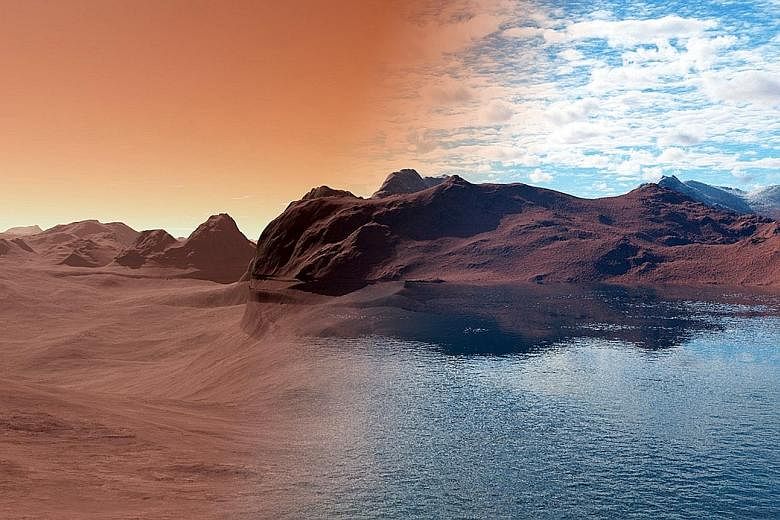The Martian surface - barren, frozen and inhospitable - once had water and with it, the potential to sustain life.
Scientists had thought that the water on Mars had evaporated into the atmosphere. A recent discovery, however, suggests that they were looking in the wrong direction.
Researchers based at five institutions, including the Earth Observatory of Singapore (EOS) and the University of Oxford, found out the red planet's porous geology was probably responsible for soaking up much of the planet's water, dragging hopes of finding life deep down into the crust.
The earth observatory's Dr James Moore, who co-authored the study, explained that much like how water on Earth reacts with iron to create rust, water on Mars reacted with its iron-rich surface to create a rust-like "hydrated rock". The water fused chemically into this hydrated rock.
The scientists used modelling to understand the composition of rocks on both planets and calculated how much water could be removed from the Martian surface through reactions with rocks, assessing the influence that rock temperature, sub-surface pressure and the general make-up of the planet had on the surface of Mars.
They found differences between Mars and Earth were key to why, despite both planets being about 4.5 billion years old, the Martian seas dried out about 3.5 billion years ago while Earth's water levels remained relatively constant.
Mars' crust contains about twice as much iron as Earth's, so it can "absorb" much more water. Over hundreds of millions of years, the seas would have soaked deep into the planet, binding with the rock and drying out the oceans. This rock would remain stable down to 100km, where pressure and heat would break the chemical bonds between the water and rock, causing water to return to a liquid, though a super-heated state. But it had no way to return to the surface.
A similar process occurs on Earth, at up to 60km deep, except that the chemically released water goes up and into our atmosphere again, due to the movement of tectonic plates - which are far more active here than on Mars - and create channels for the water to escape back to the surface. "We need plate tectonics the way we have them on Earth - with the volcanoes, earthquakes and tsunamis that cause so much damage - to have water to ensure we can live," said Dr Moore, pointing out that on Mars there is potentially enough water in the rocks to create a 3.5km deep ocean.
While unable to rule out the possibility of life lurking in the liquid water trapped more than 100km beneath Mars, he believes it is highly unlikely.
"This study shows that the starting chemistry of any planet is key to whether it will be able to support life in the long term," he said. "Unfortunately for Mars, it was doomed from the start just by its chemistry."
He said the discovery would also help in the search for life in outer space, or even planets that humans could one day colonise, based on their chemistry and plate tectonics.
"One of the team's next steps is to study Earth-type planets and look for the ones which have the right conditions to allow life to develop."
The study was published in the journal Nature this month.


